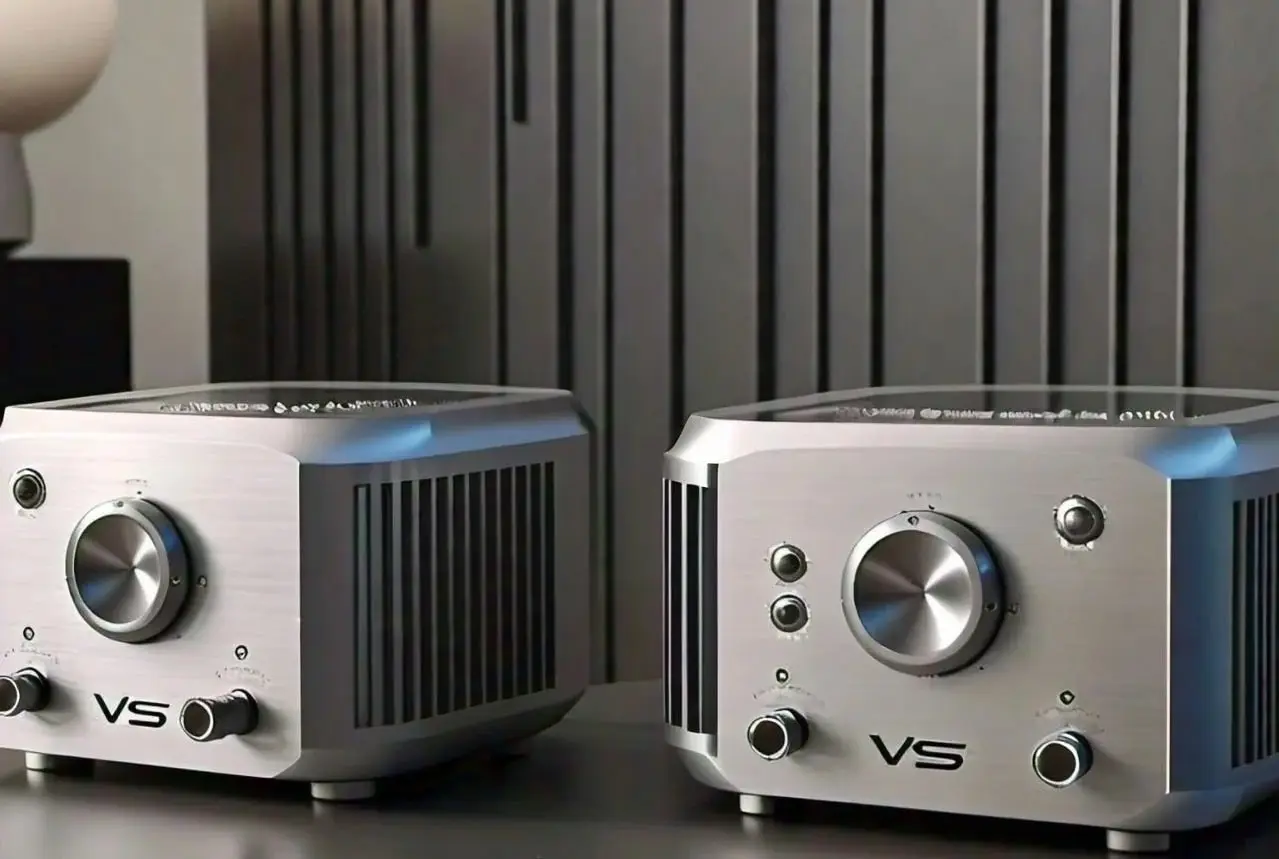Preamplifier vs Amplifier | A Comprehensive Guide
While exploring the world of audio equipment, every one of us may encounter terms like preamplifier and amplifier. But what exactly are the differences between a Preamplifier and vs Amplifier? In this comprehensive guide, we’ll unravel the distinctions between preamplifiers and amplifiers, helping you understand their unique roles in your audio setup.
Understanding the Contrast Between Preamplifier vs Amplifier
When it comes to audio equipment, the terms “preamplifier” and “amplifier” are often used interchangeably, but they are not equivalent. They have significant differences.
A preamplifier is a device that takes a weak signal from a microphone, instrument, or other audio source and amplifies it to line level. For example, the audio output from a TV to a receiver, or a regular AUX cable, may have a very low signal strength, perhaps not enough to drive the receiver correctly. To boost it a little, a preamplifier increases the signal level so that it can be processed, and also performs (preliminary) signal manipulation.
An amplifier, on the other hand, takes a line-level signal and amplifies it to a level suitable for driving speakers or headphones. The amplifier is downstream in the receiver. It is the last stage, or you can use an external amplifier for this last part of the signal path to the speakers (more on that later).
What is a Preamplifier?
A preamplifier, often abbreviated as a preamp, is an electronic device used to amplify weak electrical signals from input sources, such as microphones, turntables, or musical instruments, before they are further amplified by a power amplifier.
In audio systems, preamplifiers perform several important functions:
Signal Amplification: Preamplifiers boost the amplitude of weak signals from input sources to a level suitable for further processing and amplification.
Signal Conditioning: Preamplifiers may include tone controls, equalization adjustments, and volume controls to shape the sound quality according to the user’s preferences.
Signal Routing: Preamplifiers often provide multiple input and output options, allowing users to select and switch between different audio sources.
Impedance Matching: Preamplifiers match the impedance of input sources to the impedance of subsequent amplification stages for optimal signal transfer and fidelity.
You may like: Best AV Receivers Under $500 (2025)
Overall, preamplifiers play a crucial role in audio systems by preparing and optimizing audio signals for amplification and eventual playback through speakers or headphones.
What is an Amplifier?
An amplifier is an electronic device designed to increase the strength or power of a signal. In the context of audio systems, amplifiers are used to boost the amplitude of electrical signals from audio sources, such as CD players, turntables, or digital audio players, to drive speakers or headphones and produce sound at audible levels. Amplifiers come in various types, including integrated amplifiers, power amplifiers, and headphone amplifiers, each serving different purposes in audio reproduction systems.
Power Boost: The core function of an amplifier is to significantly amplify the weak electrical signal from your audio source (like a phone, turntable, or CD player). This feeble current wouldn’t be enough to drive your speakers and produce an audible sound. The amplifier takes this signal and cranks up its power, making it strong enough to get the party started.
Types of Amplifiers: There are two main amplifier categories:
Integrated Amplifiers: These are all-in-one units that combine the functionalities of a preamplifier and a power amplifier. They’re a popular choice for home theater setups and stereo systems seeking a simple and streamlined solution.
Separate Preamplifiers and Power Amplifiers: Audiophiles who crave ultimate sound quality and control often opt for separate preamps and power amps. This allows for more customized control over the signal processing and potentially higher fidelity sound reproduction.
Power Requirements: It’s crucial to choose an amplifier with sufficient power output to match the power handling capabilities of your speakers. Mismatched power levels can lead to distortion or even damage to your speakers.
Speaker Impedance: Another important factor is speaker impedance (measured in ohms). Ensure compatibility between your amplifier’s impedance (e.g., 4 ohms, 8 ohms) and your speakers’ impedance for optimal performance.
By understanding the role of the Preamplifier vs Amplifier, you can create a sound system that delivers powerful and clear audio. Whether you choose an integrated amplifier for convenience or separate components for ultimate control, an amplifier is the workhorse that brings your music, movies, and games to life
Functionality Comparison of preamplifier vs amplifier
Preamplifier:
Signal Amplification: Preamplifiers amplify weak electrical signals from input sources to line level, preparing them for further amplification by power amplifiers.
Input Selection: Preamplifiers often feature multiple input ports, allowing users to connect various audio sources such as microphones, turntables, CD players, and digital audio devices.
Tone Control and Equalization: Many preamplifiers include tone control knobs or equalization adjustments, enabling users to adjust the frequency response of the audio signal to their preferences.
Volume Control: Preamplifiers have volume control knobs or buttons to adjust the output volume
level, allowing users to set the desired listening volume.
Signal Routing: Preamplifiers provide the ability to select and switch between different audio
sources, directing the desired signal to the power amplifier for amplification.
Phono Stage: Some preamplifiers include a built-in phono stage or phono preamp, specifically designed to amplify the low-level signals generated by turntable cartridges.
Headphone Amplification: Certain preamplifiers feature a headphone output with dedicated amplification circuitry, allowing users to directly connect headphones for private listening.
Remote Control: High-end preamplifiers may come with remote control functionality, allowing users to adjust volume, select inputs, and control other features remotely.
Amplifier:
Signal Amplification: Amplifiers receive the amplified signal from the preamplifier and further boost its power to drive speakers or headphones, producing sound at audible levels.
Power Output: Amplifiers are rated based on their power output, measured in watts per channel, which determines their ability to drive speakers and deliver sound at different volumes.
Speaker Compatibility: Amplifiers are designed to match the impedance and power handling capabilities of specific speakers, ensuring optimal performance and preventing damage to both the amplifier and speakers.
Source Selection: While some amplifiers feature multiple inputs for connecting various audio sources, their primary function is to amplify the signal received from the preamplifier and deliver it to the speakers.
Amplifier Classes: Amplifiers may be classified into different categories, such as Class A, Class AB, Class D, etc., each with its efficiency, power output, and sonic characteristics.
Distortion and Noise Levels: High-quality amplifiers aim to maintain low levels of distortion and noise, ensuring clean and accurate amplification of the audio signal without introducing unwanted artifacts.
Bridging and Bi-amping: Some amplifiers offer bridging or bi-amping capabilities, allowing users to combine multiple amplifier channels for increased power output or to separately amplify different frequency ranges for improved sound quality.
Choosing the Right Component: Gain insights into factors to consider when selecting between a preamplifier and an amplifier for your audio setup. Consider aspects like system compatibility, audio preferences, and budget constraints to make an informed decision.
User Insights: Hear from audio enthusiasts who have experience with preamplifiers and amplifiers. Discover their feedback on performance, usability, and overall satisfaction with these components in their sound systems.
Conclusion:
By the end of this guide, you’ll have a comprehensive understanding of the differences between preamplifiers and amplifiers. Armed with this knowledge, you can make informed decisions when building or upgrading your audio setup to achieve optimal sound quality and performance.







